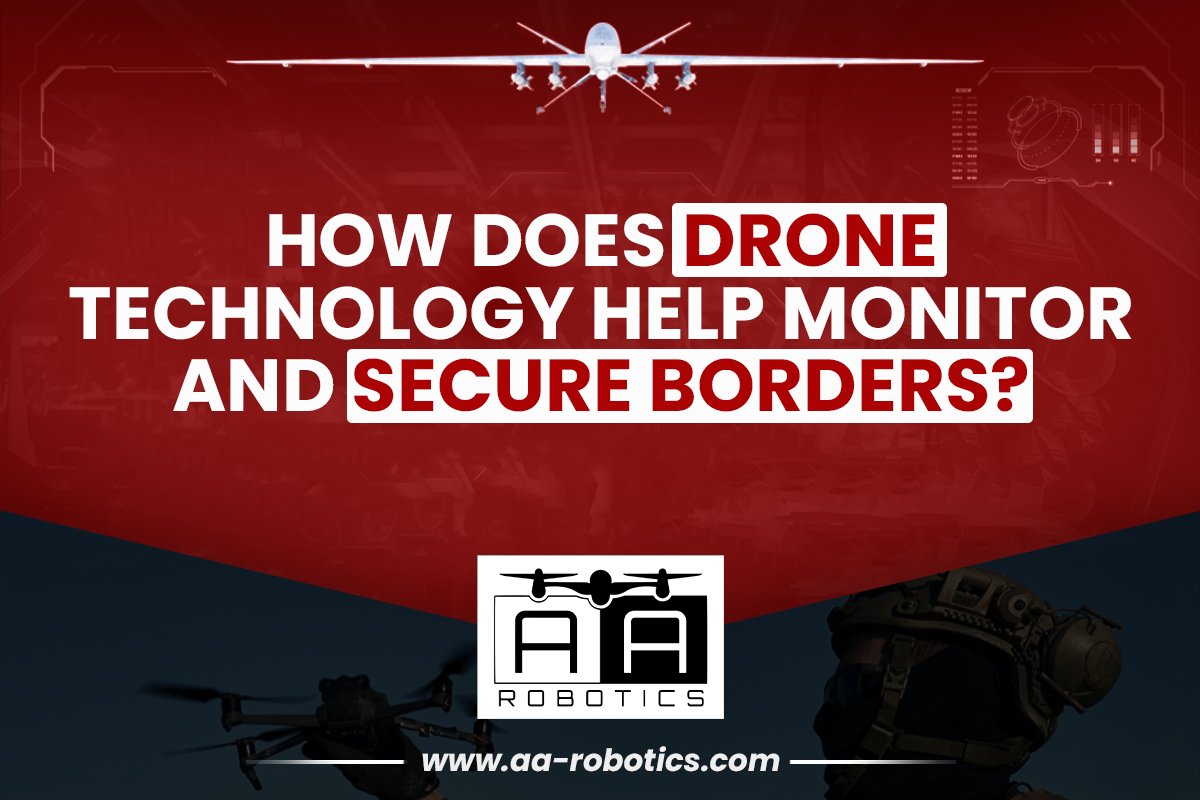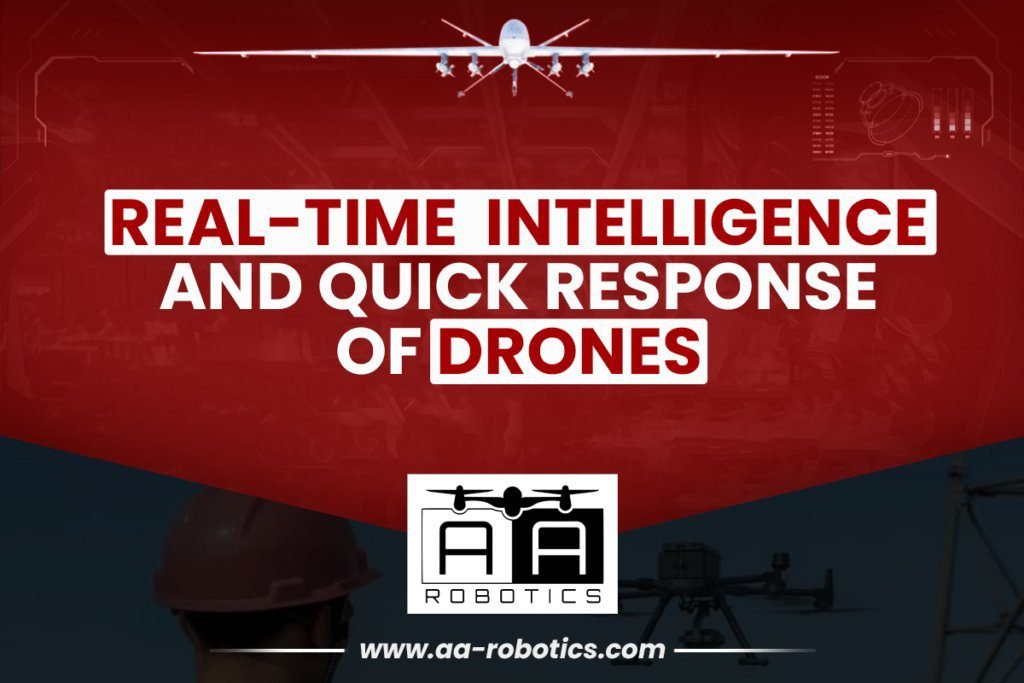
How Does Drone Technology Help Monitor and Secure Borders?
Drone technology has emerged as a very powerful tool for augmenting national security, particularly border surveillance and security. With improvements made in the capabilities of drones in warfare by leaps and bounds, countries are gradually looking at these UAVs as important assets for border observation with an opportunity to enhance the operations of border security efficiently. Drones are a critical support that provides quality technology to support safety and security without losing human resources. This AA Robotics article explores the significant benefits of drone technology for monitoring and securing borders through the lens of defence systems.
The Enhancement of Surveillance Ability
The most prominent benefit of Drones technology is the enhanced surveillance ability. The drones come with high-quality cameras and sensor equipment and can cover large geographical areas, providing real-time video footage and detailed imagery. Unlike traditional security measures that depend on human patrols or stationary cameras, drones can continuously monitor border areas without being restricted by terrain or weather conditions.
They are capable enough to operate at high altitudes; this gives them an exact s-eye view of vast areas of land, which they can use to spot and then identify unauthorised movements or potential security threats. The live feeds from such unmanned drones to the ground security personnel increase the speed at which this may take place because the security forces can respond fast to either curb smuggling, human trafficking, or unauthorised border crossing.
Real-Time Intelligence And Quick Response Of Drones

What is important here is that with border security capabilities, one may obtain real-time intelligence. The Kamikaze Drone can be designed to be able to implement advanced imaging technologies. The infrared sensors, thermal cameras, and radar systems also suit them; there will be a good chance of movement detection even in low-light conditions or during nighttime. Because it occurs in real-time, the data may be collected and allow for monitoring of activities by security personnel as they happen, which also makes possible a nearly instantaneous response time to any threats.
Be it suspicious moving vehicles across borders, unusual groups of people, or unauthorised flights or ships, drones assist in gathering actionable information and transmitting the same to ground forces in real-time. This way, prompt information helps the defence teams get their resources mobilised at a time when the illegal activity or breach in security has not yet spread.
Cost-Effectiveness Of Kamikaze Drones
Traditional forms of border monitoring include manned patrols, watchtowers, and fences, which are very financially costly. Operations are dominated by personnel, infrastructural, and equipment maintenance, both in terms of cost and resource input. Drones, however, are much cheaper. Once the investment in drone technology is made, operational costs are relatively lower than maintaining a large security force.
Drones also reduce the need for large physical infrastructure that may be hard to maintain under good conditions in distributed or hostile environments. Drones can span difficult terrains such as mountains, deserts, or dense forests where human patrols might be at risk or limited in access. This cost-effective solution allows defence systems to better resource their allocation while still ensuring enhanced border security.
Enhancing Coverage And Efficiency
Drones can be used over long stretches of borders, which might run into hundreds or thousands of kilometres. This enhances the overall surveillance capacity without the deployment of large personnel or vehicles. Another efficiency that the use of drones provides is border monitoring by covering places not easily accessible or endangered to humankind. Drones can also be designed to be autonomous; that is, they might be able to conduct surveillance for hours or even days without direct human intervention. Operational endurance to this degree is quite important in areas like those along dynamic borders. The longer drones can be deployed, the better chances of illegal activity detection and better border security operations will result.
Reducing Human Exposure
Certain border regions include regions experiencing conflict, remote regions, and harsh environmental conditions where human patrols are at a high risk. Personnel are exposed to dangerous wildlife, extreme weather conditions, or hostile individuals. Drones can be used to do surveillance in such regions in a manner that minimises exposing human resources to the risks while still having a very high level of monitoring.
Cargo Deliveries Drones can be sent to monitor conflict-prone areas or areas where border guards are likely to encounter hostile forces. With drones, the chances of a dangerous encounter are minimised because they can scout and assess the threats in the periphery while allowing security forces to prepare for probable encounters more properly. By utilising drone technology, defence systems can give more importance to keeping their personnel safe but at the same time make sure that security work continues without any obstacles.
Among these, targeting and detection is the most high-precision level. Precision in targeting and detection is very vital in maintaining secure borders. Their sensors and imaging systems can identify specific targets with remarkable accuracy.
Scalability And Versatility In Deployment
The flexibility with regard to the deployment without match enables defence systems to scale their operations according to the specific needs of the border area. Therefore, if a nation requires a small fleet of drones for monitoring a localised region, then it can also easily deploy extended coverage over a larger border area if more extensive border coverage is required, for example, based on security requirements.
Highly flexible in countering emerging threats is the redeployment of drones to virtually any location along the borders. The forward deployment of more drones to these locations easily without much logistical coordination becomes feasible whenever there is an unanticipated increase in border activity. This advantage makes border security efforts dynamic and responsive to shifting security conditions.
Coordination With Other Technologies
Drones are not standalone tools but instead are used in tandem with other technologies to drive the objective of border security. They can complement ground-sensing surveillance cameras and even artificial intelligence systems into an integrated border monitoring network. For example, drones can be applied for the inspection of hot spots reported by ground sensors to produce visual confirmation and further enhance the overall intelligence network.
This implies that the information obtained by the defence system will be highly accurate and current with the help of the collaboration of drones with advanced technologies. Defence forces can develop highly efficient and timed border security systems capable of responding to a wide range of threats by creating systems using drone surveillance along with data analysis capability.
Conclusion
These advantages drones hold for defence systems are unparalleled since they deliver a stream of benefits in real-time surveillance, cost-effectiveness, real-time intelligence, and precision. Moreover, they enhance the coverage with a reduced risk to human personnel and make them deployable and scalable, besides employment in flexible manners with other cooperating technologies integrated into an overall comprehensive network of security. Furthermore, with the ability to monitor environmental changes across borders, they serve as an added security system. To cut a long story short, drones are weapons deployed on the borders, and their role will only become more diversified with the advent of new technology. Drones offer strategic and operational advantages that help defence systems protect borders efficiently and effectively to secure the nation while keeping risks and costs at bay.
Drones offer real-time aerial views of border areas so that the authorities can better trace any unauthorized movement, monitor remote areas, and identify potential security dangers.
Because the drones possess sophisticated cameras and sensors, they can closely monitor the area, reduce blind spots, and thus increase the completeness of border surveillance.
Drones are meant for remote and inaccessible areas, making them well-suited for monitoring places that may be inaccessible by patrol parties.


